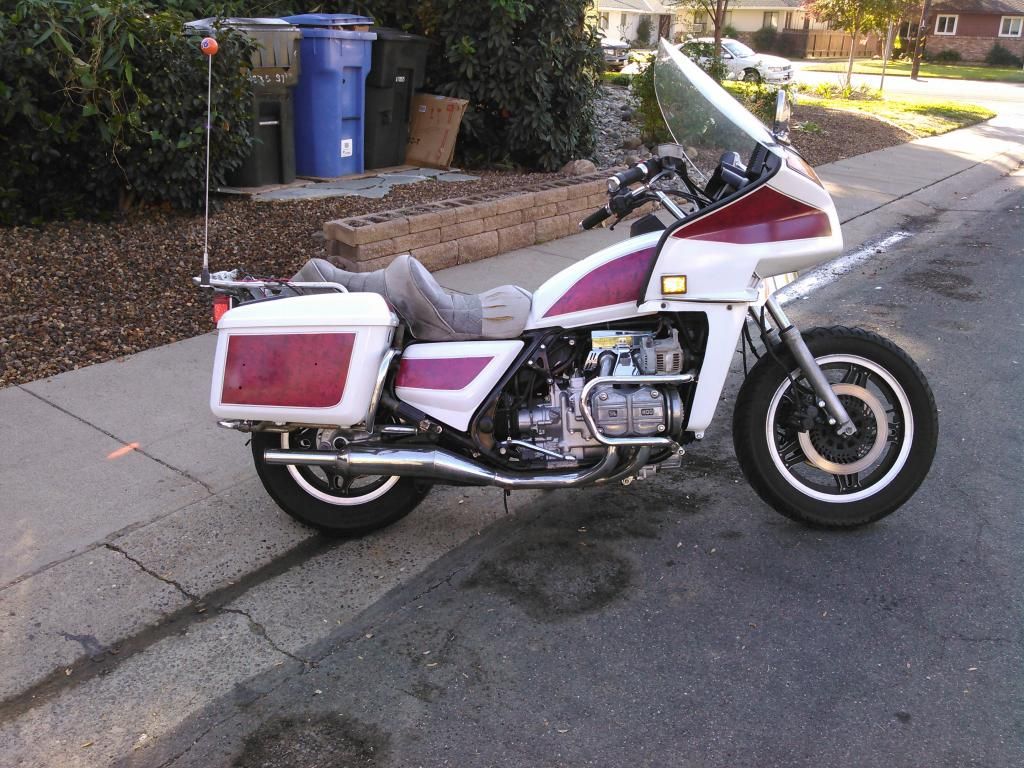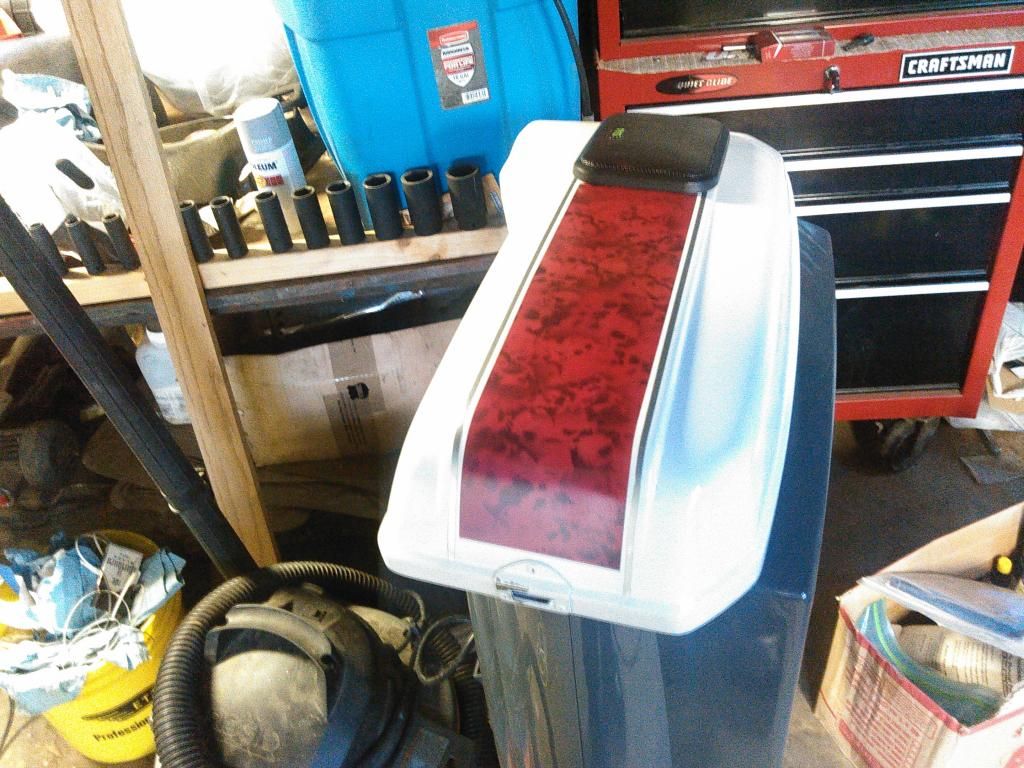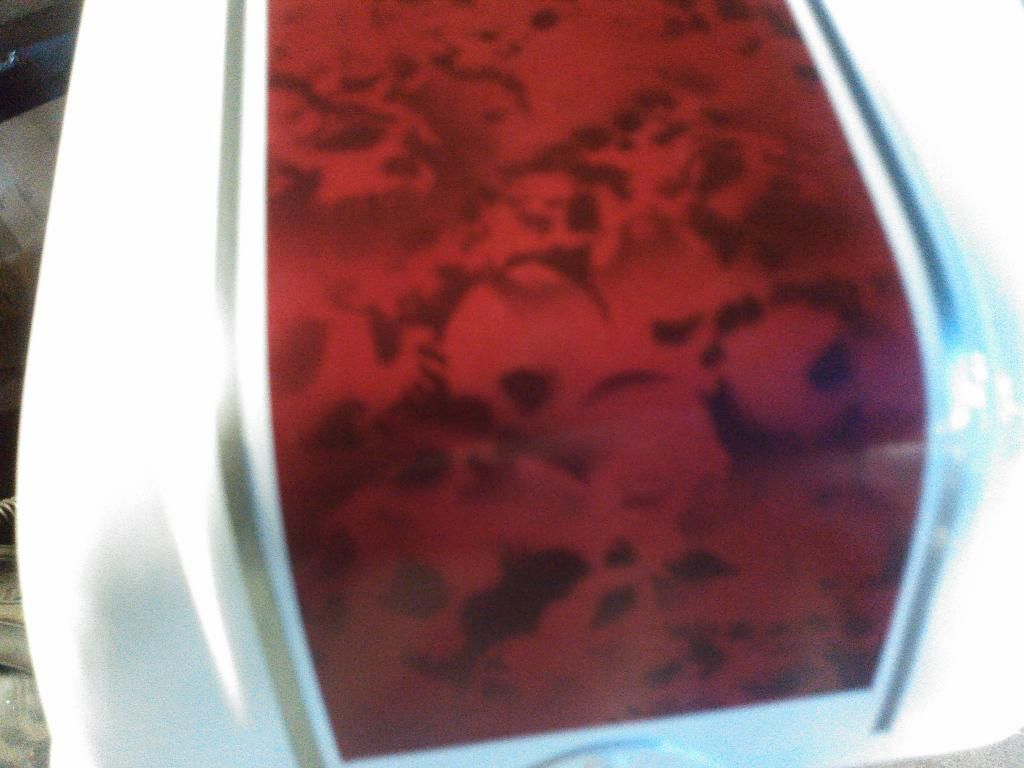|
|
Post by urbanmadness on Nov 10, 2014 1:32:30 GMT -5
Got the bags done today, and the front fender. I don't have the front fender on yet, as I have to take off the front wheel.....   |
|
|
|
Post by urbanmadness on Nov 6, 2014 21:08:05 GMT -5
Just a link to the video..... enjoy
|
|
|
|
Post by urbanmadness on Nov 3, 2014 0:31:05 GMT -5
|
|
|
|
Post by urbanmadness on Oct 29, 2014 17:12:37 GMT -5
Rustoluem acrilic lacquer for base and clear coats and model master laquer for the air brush work.. and model master candy in a rattle can. Also lacquer.
|
|
|
|
Post by urbanmadness on Oct 29, 2014 15:54:10 GMT -5
Three places to start looking. check and make sure the brake lights work when you press a brake handle second make sure the start switch is working by putting a meter on it checking for Continuaty and thirdly, if you have a side stand switch that it is functioning properly.
|
|
|
|
Post by urbanmadness on Oct 29, 2014 12:09:30 GMT -5
I am actually using rustoluem lacquer. What I found is you want to put that first coat on very light.... then run heaver a heavier coat. Leave it sit overnight, wet sand with 800 touch up or add a coat if needed sand 800 again, then clear...
The clear coat is key to protecting the paint and it really does make the finish much more durable.
|
|
|
|
Post by urbanmadness on Oct 29, 2014 1:35:33 GMT -5
|
|
|
|
Post by urbanmadness on Oct 26, 2014 11:29:39 GMT -5
Ok, have you adjusted the valves on the bike? It will help with the fuel consumption and in general make it run more consistent.
As for the other problem, with it dying sometimes... is it while running wide open throttle?
On some of these bikes, when you run at wide open throttle, you will have very little or no vacuum. If you have a vacuum fuel pump, it sometimes won't be able to keep up because it doesn't have enough vacuum and the bike will just die after running a mile or two. I've even seen some bikes close a vacuum pet cock at WOT too.
Here is how to test.... when you feel it start to die, close the throttle for about a second or two, then slowly open it back up and see if it comes back.
|
|
|
|
Post by urbanmadness on Oct 19, 2014 15:13:58 GMT -5
I was thinking leaking intake valve..... but that's rare on these bikes unless you bent the intake valve for some reason or it's sticking....
|
|
|
|
Post by urbanmadness on Oct 19, 2014 15:10:46 GMT -5
That is not just for the small whell scooter guys.... My gold wing has Old School Comstar wheels on her. These wheels are a pain to get air into, and nearly impossible at a gas station. With my compact compressor, I actually have to weave the hose thru the wheel, between the "spokes", with the air chuck in the clamped position, then open it, then carefully get it on the valve temp then clamp it down... It is a real pain in the back...  as you will have to be laying down beside the bike with it on the center-stand to do this. Just try to get a 700 pound bike on the center-stand with a low tire.... Not real easy. This would at least make it possible to do it at a gas station. I will look for one of those and put it in the fairing compartment... |
|
|
|
Post by urbanmadness on Oct 19, 2014 0:26:34 GMT -5
I grew up in the 70's, and we had a green impala station wagon. That thing was huge, 400cid small block. Clamshell tailgate... Huge beast of a car.
But what I'd really like, is what my granddad drove. He had an affection for AMC Rambler station wagons. I'd love to find one of those. Straight six, three on the tree... Brain dead simple car to work on. I'd even give it the old' rustoluem roller paint job treatment.
|
|
|
|
Post by urbanmadness on Oct 19, 2014 0:14:41 GMT -5
I know it's not a scooter. But most of, if not all, will apply to those who wish to paint/air brush a scooter. First let me say, I use a lot of rattle cans and you can get some pretty decent results, if you practice. My favorite is Rustoluem, Acrylic Lacquer. It has a wide range of colors, (as long as you want black or white) and a really decent clear. I actually haven't tried the black Rustoum lacquer, but I have used their oil based enamel black, and it has a brown tint to it, kind of like a Hershey bar if the light hits it just right. Not always desirable, so I pretty much just use the white. I started with the saddle bag covers, because they were in poor shape. 32years of throwing your leg over and scuffing it with your boots will put some pretty big gouges in them, and the one's on my bike were deep. I filled and sanded for about a week, in the evenings. I had to shape them, sand off the old pin stripes, and get them pretty much in shape for paint. I ended up doing several guide coats getting all the low and high spots sanded out. I did it all pretty much by hand and with a small palm sander. You just don't go with anything too aggressive when you are working with plastic. I finally was satisfied with the paint. All white, of course. It was then time to put on two coats of clear. You may ask, why did I clear coat before the air brush work? Well, the biggest reason, I didn't want the covers to sit for a week for the paint to completely cure before I started masking off stuff. The clear coat really helps flash the paint and keeps it from lifting when I remove the tape. No lifting, less sanding and touch up work. Next thing I did was experiment on an old scooter panel I had laying around. I painted it white, then airbrushed the skulls with my airbrush (again, lacquer paint in the air brush) and let it dry. A quick note about thinners. DO NOT USE thinner for acrylics for lacquer. I ran out of thinner and grabbed the wrong stuff, and was cleaning out the air brush for about 2 hours. Buy and use the proper thinner for the paint you are using.... The paint literally turned to jelly, huge mess to clean up. So off to the hobby store, I found some nice pearl candy red in a spray bomb.... and guess what... it was lacquer.... So, I bought a can of it as well as more thinner and black paint. Then I went and bought some automotive pinstripe tape, in silver. Back to my test panel. I then gave it a pass with the candy red, and it looked good... Very cool.... but would it be compatible with my clear coat? I let it cure for a few hours and hit it with the clear, and it looked amazing. No bubbling, hazing, etc. So now it was time to mask everything off with painter's tape and go for it. After I finished the airbrush work, I then laid down the pin stripes. Yes, pin stripe tape is a pain to work with, but it's worth it. I then let it dry for about 2 hours and hit with some more clear and the results, really do look awesome.   |
|
|
|
Post by urbanmadness on Oct 15, 2014 1:12:44 GMT -5
Heck, I bummed I have to drive to work tomorrow. In the last four months, I can count on one hand the times I've driven to work. I ride at least 30 miles a day during the week and even more on the weekends. Mostly on the goldwing now, but it was the same when I was riding the scarebeo and before that, the 150 (even tho, I couldn't do the freeway on the 150 so it took 45 minutes on surface streets). I just enjoy riding that much. I put 6000 miles on the goldwing since fathers day (when I got it running) and only 300 miles on my Ridgeline in the same amount of time (I changed the oil on the ridgeline on fathersday as well so i know exactly how many miles I've put on it, LOL)
What got me started with scooters? Well, my buddies and I, got into gas bikes. We would go out and ride these mechanical messes until they would break. Usually about 20 minutes or so. I got tired of working on them, so did my buddies, so I tried riding one of my buddies scooters. I was hooked.
So off to craigslist I went. I found a great deal on a 150 and it just grew from there. Next was the 250, then the 500, then the Goldwing. 14000 miles of riding in less then two years. Yes, I actually had four bikes in the garage at one point, plus one or three I was working on for friends... It was a bit crowded to say the least. I'm actually down to two bikes now.
|
|
|
|
Post by urbanmadness on Oct 15, 2014 0:52:47 GMT -5
Rear brakes on a bigger bike also help with stability at low speed. On the Scarbeo and the goldwing, a little rear brake and slipping the clutch (goldwing) or using the throttle (scarbeo) help with slow speed parking lot stuff and u-turns especially. Or when I'm feeling brave... splitting lanes... LOL.
Oh and I do drag the rear brake on the goldwing when making slower turns, ie, going around the block 1st and 2nd gears, under 15mph... I just rest my foot on it really, but it helps when I'm in the lower gears to keep the bike from jerking when rolling back on the power. In high speed turns, I use the engine. Is it harder on the bike? I don't know but I do have way more control. I'll gladly trade a little wear on the brakes for more control. Keep in mind, REAR brake only! The rear brake is a tool you use for control more then anything. The front brakes are where your real stopping power comes from.
YMMV, My bike while very mechanically sound, it is pretty old and I don't have linked brakes. It's an '82 and tips the scales at a little north of 700lbs. It's also a torque monster (1100cc flat four), so I really had to learn to be smooth on the throttle in the lower gears.
Back to the original poster, yes, I let her coast when I can and minimize brake use, I usually do so because I'm lazy and don't want to put a foot down, rather then MPG. Sometimes, I'll slip the clutch and use some rear, to let the bike move below walking speed, waiting for a light to change or if I'm in a line of cars waiting at a stop sign, or guard shack.
|
|
|
|
Post by urbanmadness on Oct 6, 2014 21:22:32 GMT -5
I love scooters, but for freeway work and hi way work, I'd go big Italian. My 500cc scarabeo (2006) was happy in the fast lane, tons of storage, and very comfortable. It didn't even get blown around much on my commute. Now keep in mind, I currently ride a goldwing, so I do know comfort, although my 1100 is a bit of work to ride. Also, keep in mind, I put lots of miles on my bikes. I did over 6000 in a year on my first 150cc, then the 500cc I put 4000 miles on it in just over 4 months. I ride the goldwing just as much if not more. Currently I have 6000 miles on it, in just over 4 months. The 250 I have, gets about the best gas milage of any scooter I have and have had (75mpg) but it just can't do the freeway. It's good for short bursts of 65mph (gps verified) , before the vacuum petcock closes and it runs the float bowl out of fuel, bypass the petcock and she will run 65 all day, but that will get you run over in my neck of the woods. The 250 is a chinese scooter (liquid cooled 172mm honda clone). I don't know if the real Honda Helix and Reflex handle freeway better.
Of course, there are drawbacks to the 500cc's. In really nice shape a 2006 goes for as much as 3800 bucks. Mine was a little rough but solid, and I only paid 1500 for it (right in your budget). The 500 is also a very heavy bike and is a bit of a handfull in a parking lot. That said, with a bit of practice, you get used to it. Spend some time in a parking lot... Ok, make that lots of time in a parking lot and learn TURN YOUR HEAD in turns, keep your head looking straight ahead and UP when you stop and you will be fine. Look down when coming to a stop, and you will be catching or worse dumping the bike.
The smaller bikes, are way more forgiving with technique so learn it, even if you ride a small bike, and then when you move to that bigger bike, you will find, that you were only doing it some of the time. At least that's what happened to me. The first week with the 500 was a bit, sketchy. The first two months with the goldwing were even worse.
|
|
